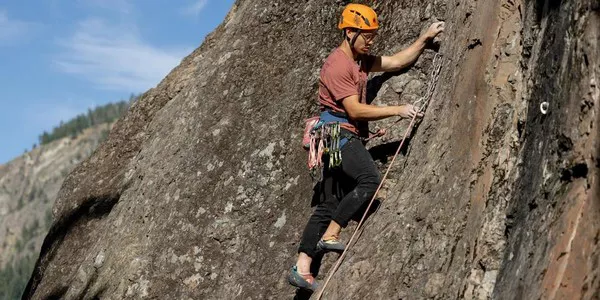Mountaineering is a thrilling and challenging pursuit that combines physical endurance, technical skill, and a deep appreciation for the natural world. Whether you dream of scaling high peaks or exploring remote wilderness areas, embarking on a mountaineering journey requires careful preparation and dedication. This article serves as a comprehensive guide for those who are eager to begin their mountaineering adventures.
Understanding the Basics
Before you set foot on a mountain, it’s essential to understand what mountaineering entails and what to expect. Mountaineering involves climbing mountains using a variety of techniques, from hiking on trails to ascending steep slopes using ropes and specialized equipment. It’s a multidisciplinary activity that blends aspects of hiking, rock climbing, ice climbing, and snow travel.
1. Research and Education
The first step in becoming a mountaineer is to educate yourself about the sport. Read books, watch documentaries, and seek advice from experienced climbers. Understanding the basics of navigation, weather patterns, altitude sickness, and mountain hazards is crucial for your safety and success.
Consider taking formal courses or joining a mountaineering club. Many organizations offer beginner-friendly courses covering topics like basic rock climbing, glacier travel, rope management, and wilderness first aid. These courses provide hands-on experience and valuable mentorship from seasoned climbers.
2. Fitness and Conditioning
Mountaineering demands a high level of physical fitness. Start a training regimen that includes cardiovascular exercises (such as running, cycling, or swimming) to build endurance. Strength training, especially focusing on core, leg, and upper body muscles, will help you tackle steep ascents and carry heavy packs.
Hiking with a weighted backpack is an excellent way to simulate the physical demands of mountaineering. Gradually increase the weight and duration of your hikes to prepare for longer expeditions. Additionally, practice yoga or stretching exercises to enhance flexibility and prevent injuries.
3. Gear and Equipment
Investing in quality gear is essential for your safety and comfort in the mountains. Some basic gear includes:
- Clothing: Layering is key. Choose moisture-wicking base layers, insulating mid-layers, and a waterproof shell. Don’t forget a good pair of mountaineering boots and insulated gloves.
- Climbing Equipment: Depending on the terrain, you’ll need a harness, helmet, ropes, carabiners, crampons, and an ice axe. Learn how to use this equipment properly before heading into the mountains.
- Navigation Tools: Carry a map, compass, and GPS device. Learn how to navigate using these tools and practice your skills in varying conditions.
4. Choosing Your First Mountain
For your initial climbs, start with smaller peaks that are suitable for beginners. Choose mountains with well-marked trails and moderate elevation gain. Research the route, terrain, and weather conditions beforehand. Popular beginner mountains include Mount Adams (Washington), Mount Hood (Oregon), and Mount Shasta (California).
Preparing for Your Climb
Once you’ve gathered the necessary knowledge and equipment, it’s time to prepare for your first climb.
1. Plan Your Trip
Plan your climb meticulously. Check weather forecasts, trail conditions, and permit requirements. Inform someone of your itinerary and expected return time. Familiarize yourself with the route and potential escape routes in case of emergencies.
2. Acclimate to Altitude
Altitude sickness can affect climbers at high elevations. If possible, acclimate yourself by spending a day or two at moderate altitude before attempting a higher peak. Stay hydrated and listen to your body—symptoms of altitude sickness include headache, nausea, and dizziness.
3. Practice Essential Skills
Before setting off, practice essential mountaineering skills such as using crampons and ice axes, tying knots, and self-arrest techniques. These skills can be lifesaving in emergency situations.
On the Mountain
As you climb, prioritize safety and teamwork. Stay hydrated, monitor weather changes, and maintain communication with your climbing partners. Adjust your pace to conserve energy and prevent exhaustion. Remember, reaching the summit is optional; returning safely is mandatory.
Post-Climb Reflection
After your climb, take time to reflect on your experience. Identify areas for improvement and celebrate your achievements. Consider joining a mountaineering community to connect with fellow climbers and gain further insights.
Conclusion
Mountaineering is a transformative pursuit that challenges you physically, mentally, and emotionally. By starting with proper education, training, and preparation, you can embark on a rewarding mountaineering journey safely and confidently. Remember, every climb is an opportunity to learn and grow as a mountaineer. Stay humble, respect nature, and enjoy the breathtaking views that only mountains can offer. Happy climbing!

